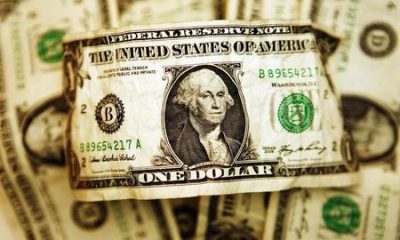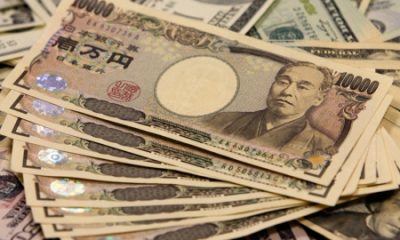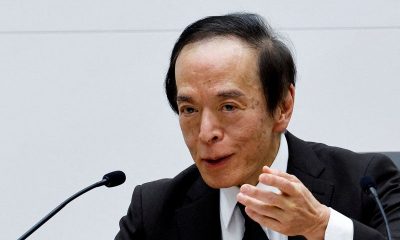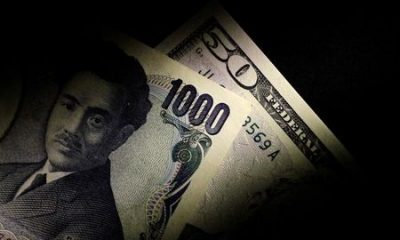Economy
Canadian firms see inflation easing somewhat amid flagging demand


© Reuters. FILE PHOTO: Governor of the Bank of Canada Tiff Macklem walks outside the Bank of Canada building in Ottawa, Ontario, Canada June 22, 2020. REUTERS/Blair Gable/File Photo
By Steve Scherer and David Ljunggren
OTTAWA (Reuters) -More Canadian firms see inflation easing over the next two years than in the previous quarter, while the business outlook fell to its lowest level since the pandemic, the Bank of Canada said on Monday in a third-quarter survey.
About a third of firms expect a recession over the coming year, the same level as the previous quarter, the survey said.
The Bank of Canada has hiked rates 10 times since early 2022 to fight inflation but left rates at 5% at its Sept. 6 meeting, and noted the economy had entered a period of weaker growth. Its next policy decision is due on Oct. 25.
In a separate survey, 55% of consumers see a recession over the next year, up from 50% in the second quarter. Some 27% of businesses see it taking more than three years to bring inflation down to the central bank’s 2% target, down from 32%.
“Reports of softer demand are broad-based,” the survey said. “Signs indicate that pricing behavior is moving toward normal. … A continued softening in demand conditions is creating an environment where firms are less able to pass through input cost increases.”
The business outlook survey index – a broad gauge of how firms feel about their prospects – hit -3.51, the lowest since the -6.16 seen in the second quarter of 2020.
“The Bank of Canada’s aggressive rate hikes are working as intended, with both businesses and consumers expecting a slowdown in activity,” BMO Capital Markets economist Shelly Kaushik said in a note.
Some 53% of businesses see inflation remaining above 3% over the next two years, compared with 64% the previous quarter.
Bank of Canada Governor Tiff Macklem said last week officials would weigh whether to let previous hikes work through the economy, or raise rates again to counter sticky inflation.
Growth unexpectedly shrank in the second quarter and stalled in the first two months of the third, while core inflation has proven sticky.
The Canadian dollar was trading 0.2% higher at 1.3625 to the greenback, or 73.39 U.S. cents. Money markets see a 40% chance of a rate hike on Oct 25.
Even though rates are at a 22-year high, the central bank does not see inflation slowing to 2% until mid-2025.
Consumers’ inflation expectations for the next year eased slightly, though they remained at more than 5%. Canadians still perceive inflation to be much higher than it is – at 6.6% instead of the 4.0% recorded in August.
“For the Bank of Canada, consumers’ sticky inflation expectations are problematic,” said Royce Mendes, head of macro strategy at Desjardins Group. “Given that both businesses and households expect the economic environment to weaken, we don’t think there’s enough evidence to suggest that the economy requires higher interest rates.”
Wage pressures, closely watched by the central bank, are easing, though businesses still expect to make higher-than-normal wage increases over the next year, the survey showed.
Firms reported a widespread easing in the intensity of labor shortages, it added.
Economy
Russian central bank says it needs months to make sure CPI falling before rate cuts -RBC


© Reuters. Russian Central Bank Governor Elvira Nabiullina attends a news conference in Moscow, Russia June 14, 2019. REUTERS/Shamil Zhumatov/File Photo
MOSCOW (Reuters) – Russia’s central bank will need two to three months to make sure that inflation is steadily declining before taking any decision on interest rate cuts, the bank’s governor Elvira Nabiullina told RBC media on Sunday.
The central bank raised its key interest rate by 100 basis points to 16% earlier in December, hiking for the fifth consecutive meeting in response to stubborn inflation, and suggested that its tightening cycle was nearly over.
Nabiullina said it was not yet clear when exactly the regulator would start cutting rates, however.
“We really need to make sure that inflation is steadily decreasing, that these are not one-off factors that can affect the rate of price growth in a particular month,” she said.
Nabiullina said the bank was taking into account a wide range of indicators but primarily those that “characterize the stability of inflation”.
“This will take two or three months or more – it depends on how much the wide range of indicators that characterize sustainable inflation declines,” she said.
The bank will next convene to set its benchmark rate on Feb. 16.
The governor also said the bank should have started monetary policy tightening earlier than in July, when it embarked on the rate-hiking cycle.
Economy
China identifies second set of projects in $140 billion spending plan


© Reuters. FILE PHOTO: Workers walk past an under-construction area with completed office towers in the background, in Shenzhen’s Qianhai new district, Guangdong province, China August 25, 2023. REUTERS/David Kirton/File Photo
SHANGHAI (Reuters) – China’s top planning body said on Saturday it had identified a second batch of public investment projects, including flood control and disaster relief programmes, under a bond issuance and investment plan announced in October to boost the economy.
With the latest tranche, China has now earmarked more than 800 billion yuan of its 1 trillion yuan ($140 billion) in additional government bond issuance in the fourth quarter, as it focuses on fiscal steps to shore up the flagging economy.
The National Development and Reform Commission (NDRC) said in a statement on Saturday it had identified 9,600 projects with planned investment of more than 560 billion yuan.
China’s economy, the world’s second largest, is struggling to regain its footing post-COVID-19 as policymakers grapple with tepid consumer demand, weak exports, falling foreign investment and a deepening real estate crisis.
The 1 trillion yuan in additional bond issuance will widen China’s 2023 budget deficit ratio to around 3.8 percent from 3 percent, the state-run Xinhua news agency has said.
“Construction of the projects will improve China’s flood control system, emergency response mechanism and disaster relief capabilities, and better protect people’s lives and property, so it is very significant,” the NDRC said.
The agency said it will coordinate with other government bodies to make sure that funds are allocated speedily for investment and that high standards of quality are maintained in project construction.
($1 = 7.1315 renminbi)
Economy
Russian central bank says it needs months to make sure CPI falling before rate cuts -RBC


© Reuters. Russian Central Bank Governor Elvira Nabiullina attends a news conference in Moscow, Russia June 14, 2019. REUTERS/Shamil Zhumatov/File Photo
MOSCOW (Reuters) – Russia’s central bank will need two to three months to make sure that inflation is steadily declining before taking any decision on interest rate cuts, the bank’s governor Elvira Nabiullina told RBC media on Sunday.
The central bank raised its key interest rate by 100 basis points to 16% earlier in December, hiking for the fifth consecutive meeting in response to stubborn inflation, and suggested that its tightening cycle was nearly over.
Nabiullina said it was not yet clear when exactly the regulator would start cutting rates, however.
“We really need to make sure that inflation is steadily decreasing, that these are not one-off factors that can affect the rate of price growth in a particular month,” she said.
Nabiullina said the bank was taking into account a wide range of indicators but primarily those that “characterize the stability of inflation”.
“This will take two or three months or more – it depends on how much the wide range of indicators that characterize sustainable inflation declines,” she said.
The bank will next convene to set its benchmark rate on Feb. 16.
The governor also said the bank should have started monetary policy tightening earlier than in July, when it embarked on the rate-hiking cycle.

 Forex2 years ago
Forex2 years agoForex Today: the dollar is gaining strength amid gloomy sentiment at the start of the Fed’s week

 Forex2 years ago
Forex2 years agoHow is the Australian dollar doing today?

 Forex1 year ago
Forex1 year agoUnbiased review of Pocket Option broker

 Forex2 years ago
Forex2 years agoDollar to pound sterling exchange rate today: Pound plummeted to its lowest since 1985

 Cryptocurrency2 years ago
Cryptocurrency2 years agoWhat happened in the crypto market – current events today

 World2 years ago
World2 years agoWhy are modern video games an art form?

 Stock Markets2 years ago
Stock Markets2 years agoMorgan Stanley: bear market rally to continue

 Economy2 years ago
Economy2 years agoCrude oil tankers double in price due to EU anti-Russian sanctions

































